An 8-week old puppy is a very sweet and innocent little dog that just needs to absorb a lot of fun activities and training. In this period, they are starting to feel more confident and explore the world, which can be disastrous if you don`t train them properly.
In this article, we bring you a useful guide for 8-week old puppy crate training and much more general information.


How To Take Care Of An 8-week Old Puppy
An 8-week old puppy is very cute, but it is a big obligation and will require the most of your time and energy. Since they turn 8 weeks, they are ready to be separated from their mother and fostered in a new family. Primal care needs to be around quality sleep, food and entertainment. First, you need to find a bed for your dog. Rather search how big will they grow and buy one that they can grow with. What is more, you can fill it with soft stuffed toys and blankets when they are little to feel comfortable. They must eat only food recommended for puppies and in quantities, it is recommended. When you give it treats, remember that it has baby teeth and need to adjust treats. They approximately need 4 meals during the day and you can give less if they eat more treats.
A good breeder will vaccinate and exam the puppy before giving it to you, but if they didn’t, you have to make an appointment at the vet`s and you will need to vaccinate it every 2 to 3 weeks until it is 4 months old. Also, puppies usually have worms, so you will need to deworm them to be healthy.
What Can You Expect From An 8-week Puppy?
There is much to expect from an 8-week puppy since it is just starting life and will be very curious. In the beginning, when it first comes to its new home, it can feel alone and separated, so it is normal for them to cry during the night. It is easier if you keep its bed near you and fill it with soft blankets and toys, so they don’t feel lonely. Yet, there are many more ways how to keep puppy from crying in crate, so you can try more until you find the best one. During the day, they will need a lot of attention and care. Raising a pet isn’t a one-man job, and even if you live alone, you need someone to take care of it while you’re gone. Make sure they meet very early to remember the smell. At this stage, a puppy can be a bit clumsy, but very curious, so be sure to remove obstacles and help them play. They need a schedule they will start to learn from. During this period, they can sleep about 18 to 20 hours per day and need a lot of relaxing after activities. You can hold it in a lap or arms while they are sleeping, but be sure they still get used to their bed and start getting the habit of sleeping there.
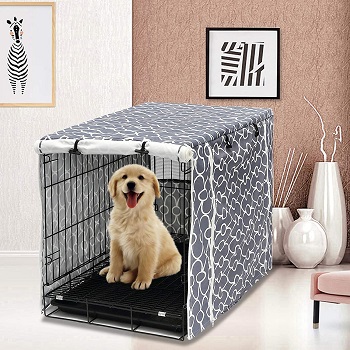

Guide For 8-week Old Puppy Crate Training
Why Start At 8 Weeks?
It may seem too early to start at this age, but it is an ideal time for the dog to learn more with the smallest effort and quickest. Idea time to train is before 16 weeks old when they are eager to listen and try everything. Also, they are still used to their mother learning them, so you can be their guide and teach them easier.
Safety Tips Before Starting
Having a small puppy at home and started training can be dangerous if you don’t secure space they will be. First, you need to remove electrical devices it can bite the cord or any dangerous objects that can fell on it. If you want to limit its moving in the apartment, then set baby gates, especially to dangerous areas. Store food that they can reach or any object they might chew and destroy, like shoes. Raising a puppy may change your habits, but it is well worth it later. Also, remove any toxic plant and you can find the list of toxic plants for dogs on PETA`s website. There are many reasons why do dogs eat plants, but their health must be safe.
Which Crate Is Good To Use
There are many crates for dogs on the market, and it may seem like it is hard to pick the good one. First, when you buy it, avoid small crates for puppies that will be overgrown quickly. For transporting it, choose a transport bag instead. Check its maximum size and find the crate it can use later to get used to it. First, a crate needs a stable base, so the best choice is to use a rubber or plastic solid base. It is better if it can be removed if you need to clean it, which can be often with a small puppy. A crate can be plastic or with a metal grid. It is recommended to use metal for easier cleaning and removing odours. Be sure that there are no sharp points that can hurt your puppy. To prevent odours, you should clean them at least twice a month.


Crate Training Schedule
To start with training, you should begin with a schedule. In the first week, you can expect low progress, but some steps can be taken. First, you need to introduce your puppy to a crate. To start using it, put their bed inside. Also, fill it with toys and blankets they like. If you want, you can put your shirt inside to feel your presence. To secure the bottom, put the towel on it, so it will be easier to clean.
In training puppies, especially when it comes to 8-week old puppy crate training, you should apply only positive training with treating and praising them when they do something good. Punishing them can only raise fear and puzzled puppy, so avoid any type of training with it.
It is recommended to put the puppy in a crate when they are having a nap. Usually, it will be 2 to 3 times during a day for a few hours. Spending their time in the crate during the day and seeing you may be less stressful to them. Also, remove their collar so they can’t stick to anything in the crate. For the first few days, leave doors open, so they can freely exit and show what they need. The final result might be that your dog sleeps in crate with door open.
Next, feed them in the crate and treat them when they freely enter it. Feeding is a happy process, when they feel safe and cared for, so if you feed them inside, it will connect those feelings with the crate. Also, when you notice it has freely entered it, give it a small treat to praise. Yet, don’t put any water o food leftovers with it in the crate to avoid mess and odours.
Crate training is just one of the daily training puppies should have. This is one of the most important, just after potty training. As soon as they get out from the crate, take them out for a walk. The puppy needs to have a potty walk every 2 to 3 hours per day, especially if you want to train it to do it outside. This means you will need to get up during the night and take them out, but be sure it will only last short.
How Long Can It Be In A Crate?
Patience to train a puppy is key, but they won’t have much patience in a dog crate. You should know that they need to feel safe inside, and if you notice their anxiety, stop the training. The time dog should spend in the crate is measured on how many months they have: for an 8-week old puppy, it is 3 months. This means it can spend 3 hours closed in a dog crate and then you should release it. It isn’t a problem if they spend an hour more, but just to keep them safe while you are outside. Yet, if you are home, don’t let them inside seeing you for too long, because it can seem like a punishment.
To Sum Up
An 8-week old puppy crate training can be a very interesting and active experience, but you need to have a lot of patience. This is the ideal time for your dog to start learning since they are eager to listen and learn. Be sure to provide them with comfortable conditions and be more active in training for a few weeks. If you need a crate for your puppy, you might be interested in the post about the best training cages for dogs or the best small dog training crates.




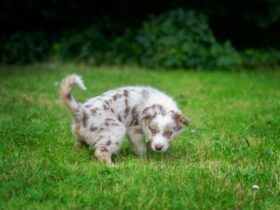

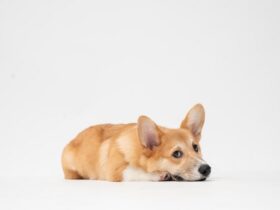





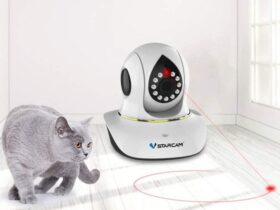

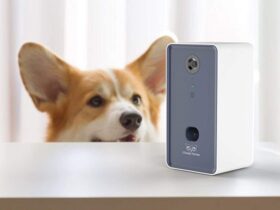
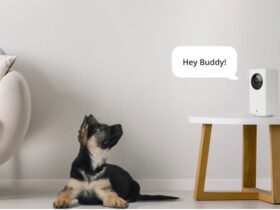
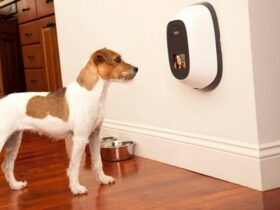

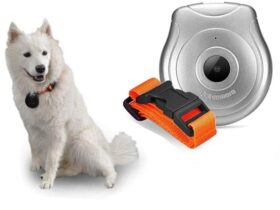
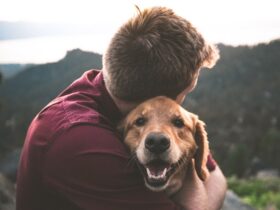




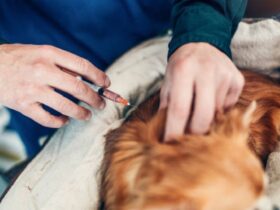
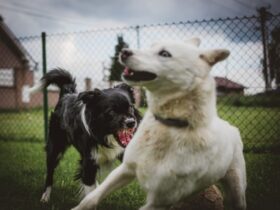


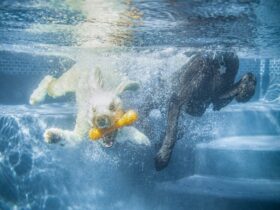

Leave a Reply